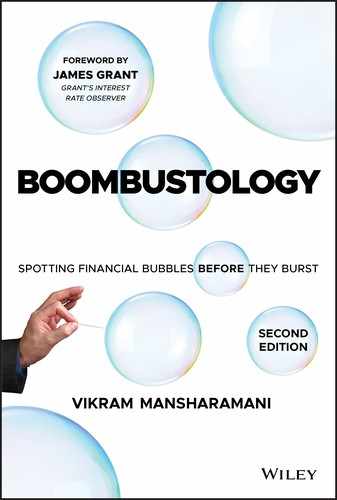Book Description
The new, fully-updated edition of the respected guide to understanding financial extremes, evaluating investment opportunities, and identifying future bubbles
Now in its second edition, Boombustology is an authoritative, up-to-date guide on the history of booms, busts, and financial cycles. Engaging and accessible, this popular book helps investors, policymakers, and analysts navigate the radical uncertainty that plagues today’s uncertain investing and economic environment. Author Vikram Mansharamani, an experienced global equity investor and prominent Harvard University lecturer, presents his multi-disciplinary framework for identifying financial bubbles before they burst. Moving beyond the typical view of booms and busts as primarily economic occurrences, this innovative book offers a multidisciplinary approach that utilizes microeconomic, macroeconomic, psychological, political, and biological lenses to spot unsustainable dynamics. It gives the reader insights into the dynamics that cause soaring financial markets to crash. Cases studies range from the 17th Century Dutch tulip mania to the more recent US housing collapse.
The numerous cross-currents driving today’s markets—trade wars, inverted yield curves, currency wars, economic slowdowns, dangerous debt dynamics, populism, nationalism, as well as the general uncertainties in the global economy—demand that investors, policymakers, and analysts be on the lookout for a forthcoming recession, market correction, or worse.
An essential resource for anyone interested in financial markets, the second edition of Boombustology:
- Adopts multiple lenses to understand the dynamics of booms, busts, bubbles, manias, crashes
- Utilizes the common characteristics of past bubbles to assist in identifying future financial extremes
- Presents a set of practical indicators that point to a financial bubble, enabling readers to gauge the likelihood of an unsustainable boom
- Offers two new chapters that analyze the long-term prospects for Indian markets and the distortions being caused by the passive investing boom
- Includes a new foreword by James Grant, legendary editor of Grant's Interest Rate Observer
A comprehensive exploration of how bubbles form and why they burst, Boombustology, 2nd Edition is packed with a wealth of new and updated information for individual and institutional investors, academics, students, policymakers, risk-managers, and corporate managers alike.
